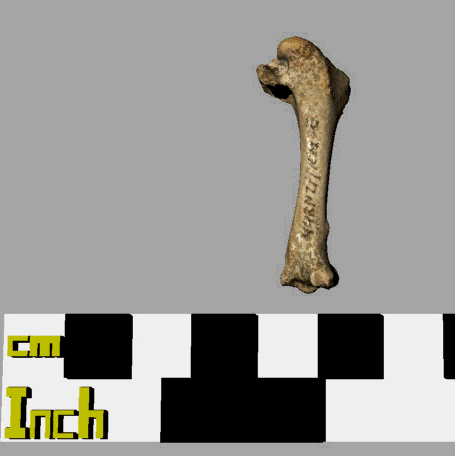A fine woodpecker skull with an exceptionally well-preserved hyolingual apparatus presented by Duke Farms, the first in a weekly series.

You begin to interest me…vaguely
A fine woodpecker skull with an exceptionally well-preserved hyolingual apparatus presented by Duke Farms, the first in a weekly series.

Another example of why you should always hire a professional zooarchaeologist when you find animal bones on your site (in this case, the professional zooarchaeologist was Renee Walker):

Hart, John P., and Robert S. Feranec. 2019. The Dog That Wasn’t: An Historical Pig Burial on the Sixteenth-Century AD Klock Site, Fulton County, New York. Archaeology of Eastern North America 47:1-6.
Abstract. An articulated animal skeleton was found in a pit feature at the cal. sixteenth-century AD Klock site in Fulton County, New York during New York State Museum excavations in 1970. The skeleton was reported as a dog burial associated with the Native American occupation in Funk and Kuhn’s 2003 report on the site. Recent analysis indicates that the animal was a six-month-old domesticated pig. A radiocarbon date on the skeleton indicates the animal was most likely buried in the cal. nineteenth century AD, well after the Native American occupation of the site.
One more for Halloween, from Jazz Age singer Lee Morse and the Blue Grass Boys:
There are no confirmed historic records of fox squirrel from New Jersey, although it is present in surrounding states. One subspecies, the Delmarva fox squirrel, was recently removed from the endangered species list after a concerted effort was made in Delaware and neighboring states to help it.
While fox squirrel bones are found in zooarchaeological assemblages in other states, there is, only prehistoric archaeological site in New Jersey where fox squirrel has been identified. In this article (with a 2012 date, but only recently published), the first archaeological record of fox squirrel bones from a nineteenth century archaeological site in New Jersey is reported.

On the 100th anniversary of the extinction of the passenger pigeon, the Virtual Curation Laboratory at Virginia Commonwealth University has just posted the results of a project to create 3D models of passenger pigeon bones. Most of the source bones were excavated from an archaeological site in Virginia. Its a fantastic idea that will make easier for everyone, including scientists trying to identify passenger pigeon at archaeological and paleontological sites.
There are already hundreds of prehistoric sites where this bird has been identified, but it is surprisingly less common to have passenger pigeon identified from historic period archaeological sites. One factor complicating their identification in historical sites is the challenge of distinguishing passenger pigeon from the similarly sized rock dove, or common pigeon (Columba livia), that was introduced to North America in the 1600s. Often when pigeon bones of a certain size are found in historic period sites, they are classified only as Columbidae, or pigeon. It would be nice to see the VCL also produce 3D models of the rock dove, so zooarchaeologists without access to a comprehensive faunal collection might be better able to distinguish these two species.
For more information, see the VCL website.
The Virtual Curation Laboratory at Virginia Commonwealth University has just posted a 3-D scanned image of a passenger pigeon bone. Follow the link to their site, as they have have scanned and posted several other bones from Ectopistes.
